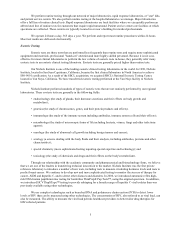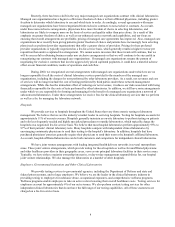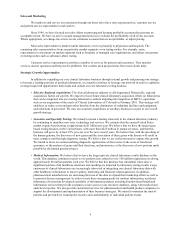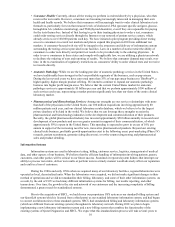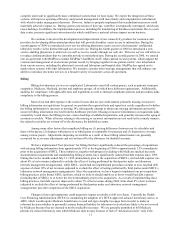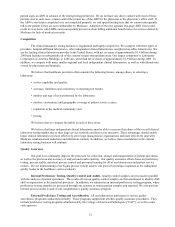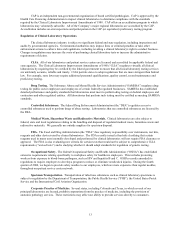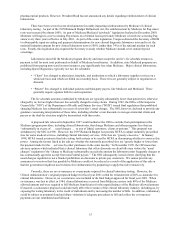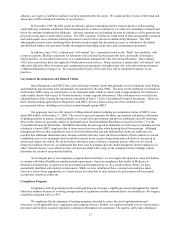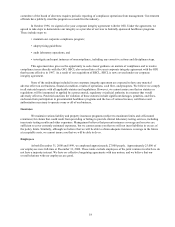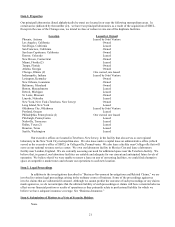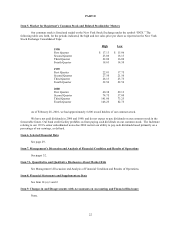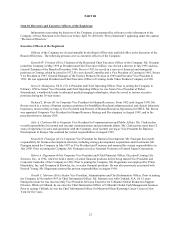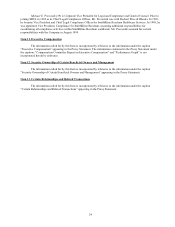Quest Diagnostics 2000 Annual Report Download - page 34
Download and view the complete annual report
Please find page 34 of the 2000 Quest Diagnostics annual report below. You can navigate through the pages in the report by either clicking on the pages listed below, or by using the keyword search tool below to find specific information within the annual report.14
Confidentiality of Health Information
Pursuant to the Health Insurance Portability and Accountability Act of 1996 (“HIPAA”), on December 28, 2000,
the Secretary of the Department of Health and Human Services (“HHS”) issued final regulations that would establish
comprehensive federal standards with respect to the use and disclosure of protected health information by a health plan,
healthcare provider or healthcare data clearinghouse. The regulations establish a complex regulatory framework on a
variety of subjects, including (a) the circumstances under which disclosures and uses of protected health information
require a general patient consent, specific authorization by the patient, or no patient consent or authorization, (b) the
content of notices of privacy practices for protected health information, (c) patients’ rights to access, amend and receive
an accounting of the disclosures and uses of protected health information and (d) administrative, technical and physical
safeguards required of entities that use or receive protected health information. The regulations establish a “floor” and
would not supersede state laws that are more stringent. Therefore, we will be required to comply with both federal
privacy standards and certain varying state privacy laws. In addition, for healthcare data transfers relating to citizens of
other countries, we will need to comply with the privacy and security requirements of individual countries or, where
applicable, the European Data Protection Directive (through adherence to the Safe Harbor Agreement between the
European Union and the United States). The comment period was reopened for the federal privacy regulations, but they
are anticipated to become effective in April 2003 for healthcare providers and most other covered entities. In addition,
final standards for electronic transactions were issued in August 2000 and will become effective in October 2002. These
regulations provide uniform standards for code sets and electronic claims, remittance advice, enrollment, eligibility and
other electronic transactions. Finally, the proposed security and electronic signature regulations issued by the Secretary
of HHS in August, 1998 pursuant to HIPAA are expected to be finalized this year. HIPAA provides for significant fines
and other penalties for wrongful disclosure of protected health information. Compliance with the HIPAA requirements,
when finalized, will require significant capital and personnel resources from all healthcare organizations, including us.
However, we will not be able to estimate the cost of complying with all of these regulations until after they all are
finalized. The regulations, when finalized and effective, could adversely affect us.
Regulation of Reimbursement for Clinical Laboratory Services
Overview. The healthcare industry has been undergoing significant changes in the past several years.
Governmental payers, such as Medicare (which principally serves patients aged 65 years and older) and Medicaid (which
principally services indigent patients), as well as private insurers and large employers have taken steps to control the cost,
utilization and delivery of healthcare services. Principally as a result of recent reimbursement reductions and measures
adopted by the Health Care Financing Administration (“HCFA”) to reduce utilization described below, the percentage of
our aggregate net revenues derived from Medicare programs declined from 20% in 1995 to 13% in 2000. We believe that
our other business may significantly depend on continued participation in the Medicare and Medicaid programs, because
many clients may want a single laboratory to perform all of their clinical laboratory testing services, regardless of
whether reimbursements are ultimately made by themselves, Medicare, Medicaid or other payers.
Billing and reimbursement for clinical laboratory testing is subject to significant and complex federal and state
regulation. Penalties for violations of laws relating to billing federal healthcare programs and for violations of federal
fraud and abuse laws include: (1) exclusion from participation in Medicare/Medicaid programs; (2) asset forfeitures; (3)
civil and criminal penalties and fines; and (4) the loss of various licenses, certificates and authorizations necessary to
operate some or all of a clinical laboratory’s business. Civil monetary penalties for a wide range of violations are not
more than $10,000 per violation plus three times the amount claimed and, in the case of kickback violations, not more
than $50,000 per violation plus up to three times the amount of remuneration involved. A parallel civil remedy under the
federal False Claims Act provides for damages not more than $11,000 per violation plus up to three times the amount
claimed.
Reduced Reimbursements. In 1984, Congress established a Medicare fee schedule payment methodology for
clinical laboratory services performed for patients covered under Part B of the Medicare program. Congress then
imposed a national ceiling on the amount that carriers could pay under their local Medicare fee schedules. Since then,
Congress has periodically reduced the national ceilings. The Medicare national fee schedule limitations were reduced in
1996 to 76% of the 1984 national median and in 1998 to 74% of the 1984 national median. In addition, Congress also
eliminated the provision for annual fee schedule increases based on the consumer price index through 2002. The Clinton
Administration’s original proposed budget for fiscal year 2001 sought to reduce by 1% the scheduled annual fee schedule
increases based on the consumer price index for 2003, 2004 and 2005; and to reduce by 30% the reimbursement for four
commonly ordered tests. However, no fee reductions were included in the final budget that was passed for fiscal year
2001. We cannot predict if future legislation will reduce reimbursement for clinical laboratory testing. During the 2000
presidential campaign, President Bush proposed changes to the Medicare program, particularly regarding payment for



